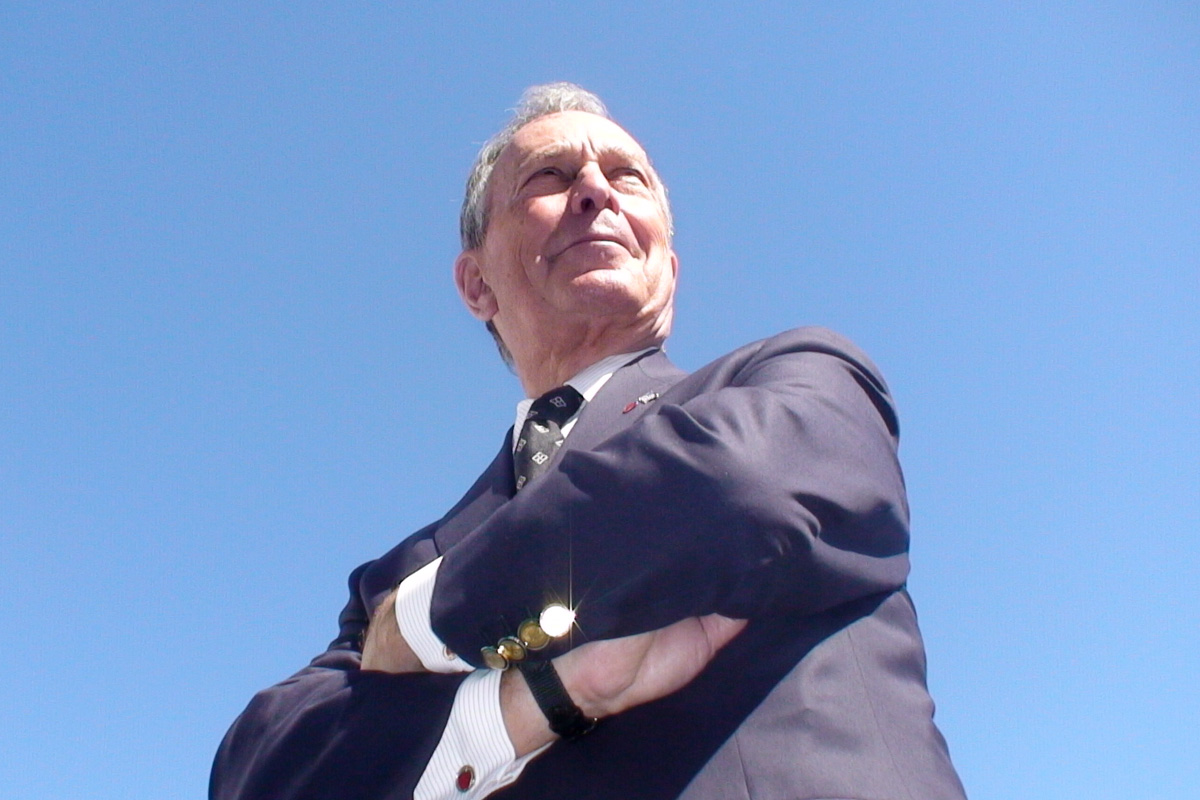
azipaybarahMichael Bloomberg.
New York Mayor Michael Bloomberg laid out an ambitious plan today to fortify the city against the extreme weather and storms we can expect thanks to a changing climate. “This is a defining challenge of our future,” Bloomberg said in a speech at the Brooklyn Navy Yard.
The plan, estimated to cost $20 billion, includes 250 recommendations in all, covering everything from erecting bulkheads and levees to retrofitting old buildings to protecting the city’s power infrastructure. (Fifty-three percent of NYC’s power plants currently sit within the 100-year floodplain, and by the 2050s, 90 percent could be in that danger zone.)
The plan covers so many different parts of the city and calls for such a wide array of proposals that the estimated price tag could change – and given the history of large infrastructure projects, that means the cost is likely to grow.
The price estimate also does not include some of the more ambitious projects envisioned in the report that require further study, like the construction of a so-called Seaport City, just south of the Brooklyn Bridge in Manhattan, modeled after Battery Park City, which would protect Lower Manhattan but cost billions.
The administration said that roughly half of the currently estimated $20 billion cost of the next decade would be covered by federal and city money that had already been allocated in the capital budget and that an additional $5 billion would be covered by expected aid that Congress had already appropriated. Most of that money was allocated, through a variety of programs, in the aftermath of Hurricane Sandy, according to the report.
While a $20 billion price tag sounds staggering, Bloomberg pointed out that Hurricane Sandy alone did $19 billion in damage to the city, and that a future storm could cause as much as $90 billion worth of destruction.
Bloomberg presented the plan a day after the New York City Panel on Climate Change — formed in 2008 to address climate change as part of PlaNYC, the mayor’s long-term sustainability vision — released an updated set of data [PDF] about how the Big Apple can expect to fare in a hotter and more volatile climate. The new findings, the AP reports, “echo 2009 estimates from the scientists’ group … but move up the time frame for some upper-end possibilities from the 2080s to mid-century.” And those upper-end possibilities — even the mid- and low-range predictions, for that matter — are certainly scary enough to justify an ambitious big-picture solution. From another New York Times article:
Administration officials estimated that more than 800,000 city residents will live in the 100-year flood plain by the 2050s. That figure is more than double the 398,000 currently estimated to be at risk, based on new maps the Federal Emergency Management Agency released Monday.
Administration officials said that between 1971 and 2000, New Yorkers had an average of 18 days a year with temperatures at or above 90 degrees. By the 2020s, that figure could be as high as 33 days, and by the 2050s, it could reach 57 …
In 2009, [the panel] projected that sea levels would rise by two to five inches by the 2020s. Now, the panel estimates that the sea levels will rise four to eight inches by that time, with a high-end figure of 11 inches.
New York is already trying to do its part to slow climate change; the city is halfway to its goal of a 30 percent reduction in emissions by 2030. But, given the latest projections of what climate change will look like for the rest of this century, Bloomberg and co. recognize that they need to start preparing for climate change as well as fighting it.
Funding and implementing Bloomberg’s plan will largely fall to his successor; he can’t run again, so a new mayor will take the helm in January. But he hastened the plan’s development after Hurricane Sandy. “We refused to pass the responsibility for creating a plan onto the next administration,” he said in his speech.
Ironically, the Bloomberg administration has spent hundreds of millions of public dollars to revitalize waterfront districts and lure upscale condo developers, while at the same time warning of the risks of such development given rapidly rising sea levels. More people living along the city’s shoreline complicated evacuation efforts before Hurricane Sandy.
Bloomberg’s speech today at the Brooklyn Navy Yard was preceded by introductory speakers and videos that struck a resolutely uplifting theme of resilience, suggesting that a changing climate should not force anyone to leave the greatest city in the world. But some homeowners are already grappling with the cost of staying, forced to choose between paying a small fortune to have their houses raised up on stilts or paying soaring flood insurance costs. AP reports that many of them don’t believe more big storms are coming: “They think” — or perhaps hope against hope — “Sandy was a fluke, a storm to end all storms, the kind they won’t ever see again.”
The climate-change panel’s report makes painfully clear how wrong they are.



